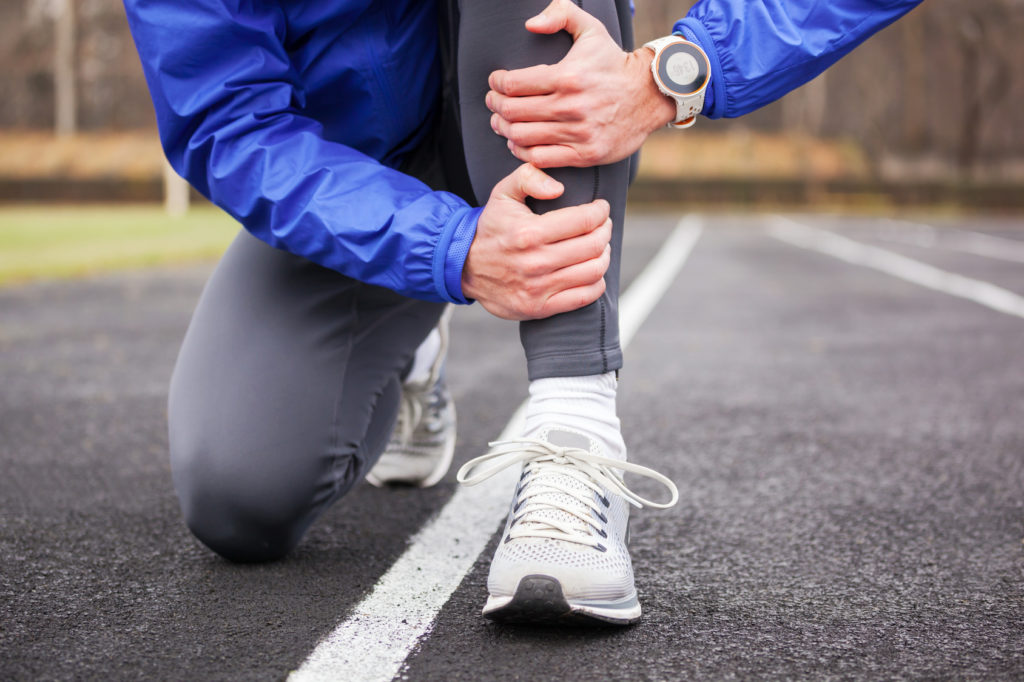Exercise related shin pain is a common presentation seen by our clinicians, but despite this, can often pose difficult diagnostic and management challenges.
From paediatric populations through to the exercising elderly, there are numerous potential causes for exertional calf or shin pain and the condition affects all people – from weekend warriors to recreational runners, and even elite athletes alike.
Pathologies more frequently include periostitis, stress fractures or exertional compartment syndrome, all of which can have overlapping clinical features, but with carefully structured history taking the experienced clinician can make the correct diagnosis and initiate optimal management to enable a timely return to your chosen sport or recreation.
Periostitis of the tibia (also often referred to in layman’s terms as ‘shin splints’) is a condition that typically affects the lower half to third of the tibia on it’s medial (midline) side.
It is also labelled medial tibial stress syndrome (MTSS) by some clinicians.
The condition is often seen in a symmetrical distribution involving both legs, and if progressive and ill-managed can literally stop runners in their tracks.
Pain from periostitis will typically commence with inflammatory features, with pain present immediately upon starting exercise and it tends to warm up and dissipate as exercise continues (unlike exertional compartment syndrome and stress fractures which typically worsen with continued activity).
Patients will often then report significant worsening of pain or ache after exercise, and this pain can last from hours to days.
Over time and especially if not managed appropriately, periostitis can start to interfere with exercise itself, even forcing complete cessation from running / exercise, and pain can be present simply with walking.
Sufferers may report swelling to the lower shin after activity.
The condition affects the periosteum – the thick outer skin encasing the bone and this is densely supplied by nerves and thus very pain-sensitive.
There is still no formal consensus as to the exact cause of MTSS.
Some theories hypothesise that periostitis is caused by excessive impact loading, whilst others believing is is more of a traction phenomenon – tight muscles (in particular the tibialis posterior and soleus muscles) pulling on the periosteum into which they insert.
In all probability, it will be a combination of the two, possibly coupled with poor running technique or other biomechanical kinetic chain issues such as excessive pronation (flat feet).
There will usually be a change in running or exercise load (distance and/or speed of running) preceding the onset of symptoms, whilst in other cases a recent change in running terrain (usually running on a harder surface) or footwear.
Diagnosis is in most cases based on clinic judgement – specific features in the history and findings on examination.
As such, investigations are not typically required, though may be ordered (e.g. x-ray, MRI or less frequently bone scan) if there are atypical features, or to rule out other possible causes of pain (e.g. stress fracture or other bone lesions).
It must be borne in mind that false positive findings on MRI have been reported in the literature (1) and again, clinical judgement is paramount in making the diagnosis.
Being an inflammatory condition, the mainstay of early treatment is rest from aggravating activity, ice, a brief course of anti-inflammatory medication (e.g. Nurofen or Voltaren), and attention also needs to be made to biomechanical issues, muscle tightness, correct footwear and the initiation of a structured and appropriate return to activity programme, often utilising other non or low impact cross training activities in the earlier stages or rehabilitation.
Dry needling can be beneficial in many cases.
Learn more about dry needling here.
It is interesting that there really haven’t been that many quality studies / RCT’s published on management of MTSS.
There have been studies showing some improvement in pain and or function (level 3-4 evidence) utilising iontophoresis (2), orthoses (3, 4) and shockwave treatment (5,6).
From a preventative perspective, only shock absorbing insoles have been found (level 1 evidence) to have any benefit in reducing the incidence of MTSS. (7)
The condition often requires a multi-disciplinary approach, with inputs from sport and exercise medicine physicians (often if the diagnosis is unclear or initial assessment / investigations are required), and treatment and biomechanical modifications from physiotherapists, podiatrists and massage therapists.
If you have lower leg pain interfering with your exercise or chosen sport and it’s causing you problems – phone (03) 9529 8899 now to book in with one of our expert clinicians at Lifecare Prahran Sports Medicine for assessment and a timely return to the sport you love.
Dr Stuart Down is a Sport & Exercise Medicine Physician who works at Lifecare Prahran Sports Medicine.
The clinic is close to suburbs including Malvern, South Yarra, Toorak, Armadale, St Kilda East, Caulfield, Richmond and Hawthorn, and has early and late appointments for all your Sports Medicine and Physiotherapy needs.
- Bergman AG, Fredericson M, Ho C, Matheson GO. Asymptomatic tibial stress reactions: MRI detection and clinical follow-up in distance runners. AJR Am J Roentgenol 2004; 183:635-638.
- Singh A, Sethy GB, Sandhu JS. A comparative study of the efficacy of iontophoresis and phonophoresis in the treatment of shin splint. J Indian Assoc Physioth 2002- 2003:17-20.
- Eickhoff CA, Hossain SA, Slawski DP. Effects of prescribed foot orthoses on me- dial tibial stress syndrome in collegiate cross-country runners. Clin Kinesiol 2000; 54:76-80.
- Loudon JK, Dolphino MR. Use of Foot Orthoses and Calf Stretching for Individuals With Medial Tibial Stress Syndrome. Foot Ankle Spec 2010; 3:15-20.
- Rompe JD, Cacchio A, Furia JP, Maffulli N. Low-energy extracorporeal shock wave therapy as a treatment for medial tibial stress syndrome. Am J Sports Med 2010; 38:125-132.
- Moen MH, Rayer S, Schipper M, Schmikli S, Weir A, Tol JL et al. Shockwave treatment for medial tibial stress syndrome in athletes: a prospective controlled study. Br J Sports Med 2012; 46:253-257.
- Moen MH, Tol JL, Weir A, Steunebrink M, Winter TC. Medial tibial stress syndrome, a critical review. Sports Med 2009; 39:523- 546

